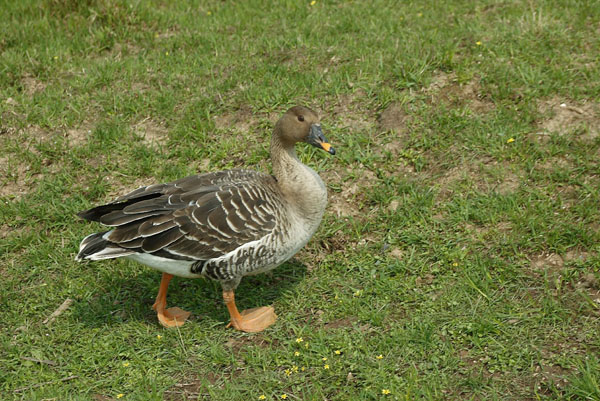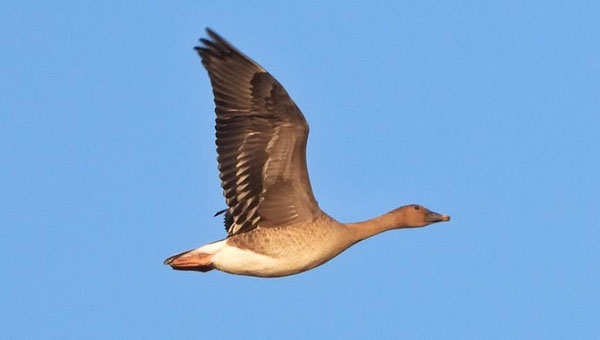Anser serrirostris
IUCN
LCBasic Information
Scientific classification
- name:Anser serrirostris
- Scientific Name:Anser serrirostris,Tundra Bean Goose,Wild geese, wheat geese
- Outline:Waterfowl
- Family:Anseriformes
Vital signs
- length:69-80cm
- Weight:1.7-4kg
- lifetime:17years
Feature
Similar to the bean goose, it has a shorter beak
Distribution and Habitat
Chinese migration occurs in most of Northeast, East and central China, and non-breeding periods occur in Xinjiang, central, East and South China waters, including Taiwan Island and Hainan Island. It breeds abroad in tundra and tundra regions throughout the circumpolar Arctic of Eurasia, overwintering in central and Western Europe, southwest and eastern Asia.
The breeding period inhabits open tundra and tundra shrubland areas, and the non-breeding period inhabits open grassland, swamps, reservoirs, rivers and lakes, and is also more common in coastal grassy coasts and farmlands, often mixed with bean geese.
Appearance
The body color is similar to that of bean geese, but the body size is smaller, the beak is shorter, the neck is thicker, and the base of the lower beak is thicker. The irises are brown, the beak is gray-black, with orange-yellow markings on the anterior part, black tips, and in some individuals orange-yellow extending to the base of the beak, and orange-red feet.
Details
The short-billed bean goose is a species of anseriidae bird that breeds in northern Siberia. The species is considered different from the bean geese by the American Ornithological Society and the International Association of Ornithologists, but the British Ornithological Society considers the two as the same species, collectively referred to as bean geese. This species is an Asian bird that migrates south in winter.

Large goose with brown upper body, white lower body, dark-brown beak, orange-yellow tip spot, orange-yellow feet. Similar species of gray geese are lighter, with flesh-colored beaks and pink feet. The subspecies serrirostris and middendorffii are distributed sympatric in eastern China, but the former is usually smaller, with a shorter neck, a mouth length of less than 70 mm, a thicker base, and a more varied yellow tip. This call is similar to a loud trumpet sound, with the smaller subspecies producing a higher pitch.

It breeds in tundra areas, migrates or winters, and gathers in large groups in open plains grassland, lakes, and farmland areas, feeding on moss and field crops. Subspecies rossicus overwinters in western Xinjiang and the Tianshan Mountains, and occasionally in southern Shaanxi. The subspecies serrirostris migrates through Northeast China, Inner Mongolia, North China, Gansu and Qinghai, wintering in the middle and lower reaches of the Yangtze River, East China and South China. There is no regular wintering site for the beanbill, but small groups are often found in other grey goose populations, most commonly in England's Slynbridge marshes, Gloucestershire, Holkham Moor, and Norfolk.
In August 2022, the Qinghai Provincial Forestry and Grass Bureau announced at the provincial bird protection and management press conference that the "three" protected animals, the short-billed bean goose, are rare and rare bird species with records but no video records in Qinghai.








